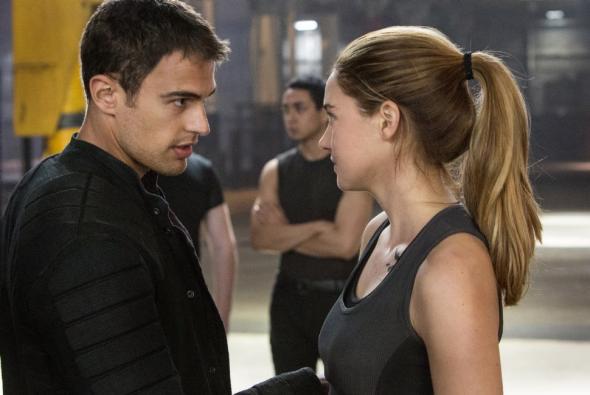In November, when the second installment of the Hunger Games film franchise was released, I published a textual analysis of the most popular young adult book series that have gone on to become major motion pictures. The analysis addressed a series of questions about the authors’ prose styles: What adjectives does J.K. Rowling use to build her fantasy world? What adverbs does Stephenie Meyer use to describe the Twilight characters’ tussles and trysts? What sentences does Suzanne Collins repeat the most in the Hunger Games?
With the release of the first film in the Divergent trilogy—a fantasy series about Beatrice, a 16-year-old who must contend with villains and a budding romance, in a dystopian Chicago of the future—I thought I’d refresh my analysis with Veronica Roth’s books added to the mix. If you’re curious about my methodology, you can go back and read my original post on the topic—or you can skip the fine print and dive right into the results. Let’s start by looking at Roth’s most frequently used sentences:
Roth used the standalone sentences “I nod” and “I shake my head” twenty-five times each. She used the phrases “I nod” and “I shake my head” a total of 148 times in her three books as either a complete sentence or as part of a longer line. Though the Hunger Games, Harry Potter, and Twilight series combined are more than six times longer than the complete Divergent series, between them they only used “I nod” and “I shake my head” a total of 121 times. With all that nodding and head shaking—not to mention the sighing, frowning, and throat clearing—there seems to be a lot of non-verbal communicating going on in the Divergent series.
Below is a chart showing Roth’s most distinctive adjectives and adverbs compared to Collins, Meyer, and Rowling. This is not the same thing as Roth’s most used descriptive words: YA writers tend to use a lot of the same vocabulary, like “other” and “first,” with high frequency, and Roth is no exception. Instead, this chart is an attempt to illustrate which words Roth uses most frequently compared to her peers.
Which of the three superstars of YA fiction does Roth most resemble? At the sentence level, Roth has a lot in common with Meyer: “He sighed” and “I took a deep breath” are similar to “She sighs” and “I clear my throat.” Roth’s precise and action-oriented descriptive language, however, has more in common with the diction of Collins. Divergent’s heavy use of sophisticated, dutifully, and drastically are more reminiscent of the Hunger Games’ functional, obediently, and severely than Twilight’s unwilling, amazingly, and wildly. The textual similarities underlie thematic ones: , The Divergent series is frequently compared to the Hunger Games, as both center around dystopian futures and take place in societies split into competing subgroups. (Divergent’s Chicago has split into five factions.) Roth’s books have been extremely popular, suggesting that American teens have yet to tire of grim, gritty visions of the future.
Whether Roth’s world will enjoy the same success on the big screen that Collins’ has, however, will likely depend less on word choice than on the lead performance by Shailene Woodley and the world-building by the film’s director, Neil Burger. It’s up to them, now, to determine whether the films will inspire Roth fans to breathe a sigh of relief that their beloved world has survived the jump to the big screen—or leave them shaking their heads in disappointment.
